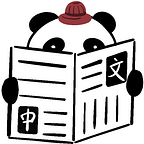If you are learning Mandarin Chinese, or need to demonstrate your mastery of the language, you likely have had to take the HSK exam. This article provides an overall introduction to HSK, explaining what the HSK is, and what it consists of.
HSK is the abbreviation for Hanyu Shuiping Kaoshi (汉语水平考试, hàn yǔ shuǐ píng kǎo shì) or Chinese Proficiency Test. It is an international standardized exam that consists of a series of level tests designed to evaluate a person’s language proficiency of Chinese.
This standardized test is usually required by universities or employers in mainland China to make sure non-native Chinese speakers understand the Mandarin language well enough. However, it is not allowed in Taiwan.
Taiwan has its own Taiwanese Mandarin exam, called the TOCFL (Test of Chinese as a Foreign Language). The TOCFL cannot be taken in mainland China, Hong Kong, or Macao.
Background
The test is administered by Hanban (汉办, hàn bàn), also known as Confucius Institute Headquarters, or the Office of Chinese Language Council International, which is an agency of the Ministry of Education of the People’s Republic of China.
The test was started by Beijing Language and Culture University in 1984, and by the 1990s, it became an official test for foreign students to attend a Mandarin-speaking University.
However, the exam has undergone many changes over the years to make it more realistic and attainable. It continues to evolve and change to this day as well to make sure to get the most accurate picture of a language learner’s ability to not only speak Mandarin but also read, comprehend, and write it.
The test is available in universities around China, and also in test centers all over the world. The list of test dates and locations can be found on the HSK website.
Structure
The HSK is divided into two separate parts — a written and an oral exam. Originally there were 11 levels but in 2009 it was reduced to only 6 due to it being too difficult for non-native speakers to learn.
Written Test
The current written test in use today was released in 2010, and only has six levels. These six levels consist of HSK level 1 to HSK level 6. At each level, you have mastered more Chinese characters. In HSK level 1, you should know about 150 Chinese words. By HSK level 6, you would know around 5,000 Chinese words and over 2600 characters. In general, you want to be at least at HSK level 3 in order to be accepted to a Mandarin-speaking university.
For the written part of the test, you take multiple-choice questions and writing questions, either on paper or online. The HSK online test is considered slightly easier, as one can simply type and select the answers instead of needing to individually write them out. However, the online-based test is not always as readily available.
Oral Test
Next, the oral test is spoken in Mandarin Chinese in front of judges. This oral test is also known as the HSKK (汉语水平口语考试, hàn yǔ shuǐ píng kǒu yǔ kǎo shì). The oral test follows the six levels model as well, with levels 1–2 being beginners, 3–4 intermediate, and levels 5–6 advanced.
The oral portion of the test’s three categories are officially as follows: HSKK primary level, HSKK intermediate level, and HSKK advanced. HSKK assesses the test takers’ oral Chinese abilities in an audio recording.
A summarized table of the current HSK structure is shown below.
Recent Update
In 2020, it was announced that there would be three new levels (7–9) for March 2022. However, they were delayed and have not been added to the testing system yet. There is currently no update on when these will be officially added.
The new update is aimed to follow the latest research in the language studies and testing field, as the current HSK test is not entirely in line with CEFR (the Common European Framework of Reference for Languages), which is a guideline used to describe foreign language learners’ ability and achievements across Europe, and now in more and more other countries.
The overall structure of the newest HSK update is given below.
To adapt to the current update, our language (currently focusing on Chinese) learning tool, Pandaist, has levels based on the newest HSK levels 1 to 9. Now you might notice that the HSK test for 7, 8, and 9 is all the same test — you get given a ranking based on how well you performed on that test. Because of that, they all use the same words.
To differentiate the levels, we took the 1/3 most frequent words, put them as HSK 7, the middle 1/3 frequency words as HSK 8, and the rarest 1/3 of words as HSK 9. This way you will have a steady progression in learning HSK 7 to 9 contents.
Final Thoughts
While Mandarin Chinese can seem intimidating to many, it has over a billion speakers worldwide and is important to learn if you want to work or study in China.
Some benefits of taking the HSK are in addition to being a requirement for acceptance into Chinese Universities, it allows you to obtain academic credits, and skip certain courses. It can also help you with getting a job and evaluate your language ability and where you are at on the standard Chinese proficiency scales.
And of course, the higher Chinese level you’re at, the easier for you to understand and directly speak to Chinese people, and even make friends that are native speakers, which can be also helpful and beneficial for your work or study experience.
While many people study for at least 1–3 years in order to reach just the HSK level 3, there is no limit to how many times you can take the test.
If you want to take the HSK, you can register online here.
Originally published at https://pandaist.com.
